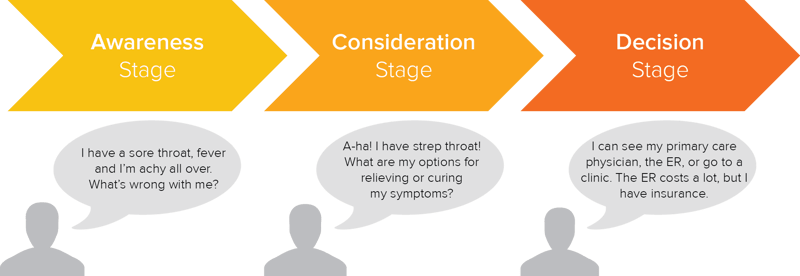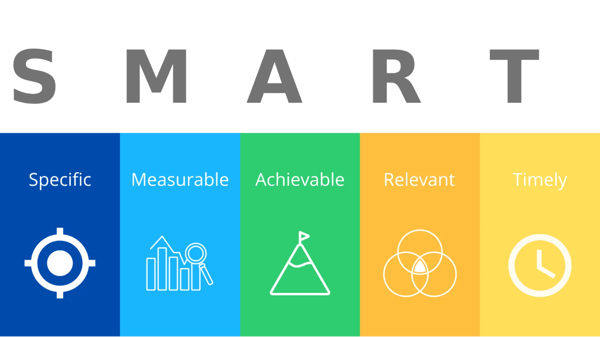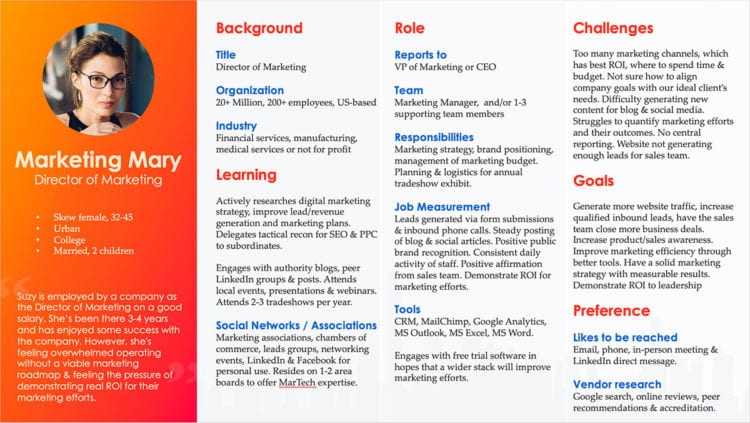How to Build a Successful Sales Strategy
Improve your sales process with an enterprise strategy. Learn actionable techniques for lead generation, setting goals & closing deals.
What is a Sales Strategy?
Sales strategy is a coordinated method of selling that allows an organization to position their products or services to their target market as a worthy solution. Effective strategies include an empathetic view of prospect needs, thorough sales planning and sales team buy-in.

Sales Methods
In the world of sales there are many sales methodologies you could prescribe to. A few standouts are Inbound Sales, Outbound Sales and SPIN Sales. So, which approach is best? If you’d asked me 5 years ago I would have said “what the heck is Inbound?”. Ask me today and I don’t know how I ever survived without Inbound Sales.
Outbound sales
This is the older school of thought for selling and predominantly used by most sales teams. Where the very existence of a salesperson is defined by pushing and selling product. That means as much as they can to anyone they can.
In, this relationship the emphasis is on the organization and the sale of its product - not the prospect. In addition, prospect outreach is always cold and without uncovering true need. The lack of intelligence up front requires more outreach effort to uncover potential prospects.
With outbound, sales teams and marketing teams run independently with very little overlap. This results in a disjointed effort along with less qualified and poor fit leads from marketing.
I’m a hammering the phones, leaving voicemails and plastering an exorbitant list of emails.
You only hear… Hey I’m Tony Baloney, from Dewey Cheatem & Howe and we offer some bullshit product. Do you need a BS product? Blah blah blah.
Inbound sales
Inbound sales is a more modern approach to selling where you don’t actually do any selling - love it! Now, I must say that when I first heard of inbound sales, it sounded like some vintage snake oil.
So, how do you sell without selling? Simple - just stop selling and start helping! What? How does that work?
First is to align sales and marketing teams to operate as a cohesive unit with shared goals. Sharing common goals will help position your company as an authority on topics aligned to your products or services.
It’s easier to gain a prospects respect and trust when you’re being helpful and human… without pushy sales tactics. Then meet the prospect on their terms that fosters a seamless sales experience.
In the past, salespeople were the guardians of product information. So, a buyer could only test a product or service by first engaging the sales and was at the mercy of the information provided.
Today, the information such as product data and product reviews are all available online. This is a fundamental shift where the buyer has more power and is no longer dependent on the salesperson.
Buyer’s Journey
The internet has forever changed how buyers interact with a brand. Organizations need to align their sales teams with the new buyer’s journey.
First task as mentioned before is to stop selling and start helping. Buyer's want to be heard and know that you understand their challenges. When this happens, you’ll have the buyer’s attention and respect. The prospect will also see you as a resource and not a sales instrument.

The buyer's journey is a big part of your sales strategy.
FACT
47% of prospective buyers viewed 3-5 pieces of content before engaging with a sales rep. (Demand Gen Report) (Source: https://www.hubspot.com/marketing-statistics).
The buyer’s journey outlines specific stages… awareness, consideration, and decision. The sales team should deliver value at each stage - across the entire journey.
- Awareness - the stage when the buyer becomes aware they have a problem, challenge or opportunity.
- Consideration - the stage where the buyer defines their problem then researches solutions.
- Decision - the stage where the buyer evaluates and decides on a solution direction.
Types of Sales Strategies
- Identify a target market
- Prospecting
- Lead generation
- Lead nurturing
- Qualifying prospects
- Discovery
- Goal setting & planning (presentation)
- Product demo
- Closing tactics
- Upselling & cross selling
- Asking for referrals
Sales Strategy Plan
The modern sales team needs a sales strategy plan to organize their goals, positioning tactics, success metrics and repeatable process. A strategic sales plan will also align your sales team by creating a defined direction with specific sales targets.
Sales plan outline:
SMART Goals
Your organizational goals should be “SMART Goals”.
- Specific
- Measurable
- Attainable
- Relevant
- Time Based
SMART organizational goal example: "Have our US-based sales team close 50% more pipeline opportunities, over the next 6 months, by adding a product demo after the Discovery Stage to reach 20 demos per month by May 1".
Every sales plan outline includes SMART goals.

Ideal customer profile
An ideal customer profile is a hyper-focused portrait of which organizations are good fit prospects for you. Typically, you must define demographics such as the business sector, company size, annual revenue, buying process and geography.
Once defined, you’ll can personalize your sales collateral against these traits and have a well-defined audience for you to target.
Ideal customer = the organizations you want to work with
Buyer persona
A buyer persona is a semi-fictional representation people that work for your ideal customer and based on market research and actual customer data. When creating a buyer persona, consider using demographics, buyer behavior patterns, motivations and goals.
Buyer persona = the people that work for your ideal customer

Product or service offering
Your product or service offering should summarize the features, benefits and the problems it solves. Most importantly, it should show how your product/service produces a successful outcome.
Build a sales team
 Building a sales team requires the direct involvement from a C-level executive, business owner, director of sales or sales manager. You will need a sales team plan for recruiting, hiring, onboarding, training, salary, commissions and incentives.
Building a sales team requires the direct involvement from a C-level executive, business owner, director of sales or sales manager. You will need a sales team plan for recruiting, hiring, onboarding, training, salary, commissions and incentives.
Specifically, you'll need recruiting and hiring to bring in the best sales talent. Onboarding and sales training will ensure your sales methods, tactics and values are being followed to stimulate positive sales activity. Then a lucrative compensation and incentive plan will keep your sales team happy and motivated.
Your sales strategy planning requires building a sales team.
Sales responsibilities
Sales team responsibilities should stretch across the entire buyer’s journey. Not only do they need to be proficient at each sales pipeline stage, they need to take full ownership of the relationship.
1. Prospecting
A salesperson needs to build awareness in your market sector through prospecting. They can accomplish this through various tactics such as live networking, LinkedIn networking, email outreach, inbound lead outreach, warm calling, etc.
No more cold calling please! It’s official - cold calling is dead. So, what’s the difference between warm and cold calling? Easy, it’s research. Gathering intel from a company website or LinkedIn can take a cold call and warm it right up. Using uncovered facts within your stream of conversation shows good planning and helps soften resistance.
Prospecting is a mix of tactics, diligent sales follow up, communication skills, objection handling, confidence and repetition through a rigorous sales outreach process. The best way to achieve confidence is to practice prospecting daily with:
- Phone prospecting
- Email prospecting
- Networking events
It’s also the job of sale to position your organization as a success partner and your product as a solution to the prospects’ problem.
2. Lead qualification
It’s a waste of time and resources to chase a poor fit lead. So, clearly define the lead qualification criteria. It could be based on a single or combination of criteria. Some examples include: company size, type of industry, geography, has true need, shows interest, etc.
Use a lead scoring tool to help you identify good fit leads in your sales pipeline.
3. Needs discovery
Discovery is an exploratory session to gain a clear understanding of the prospects’ goals and challenges. It’s also the salesperson’s responsibility to determine good fit, profitability potential and if your team can help.
7 Types of Sales Questions You Should be Asking Prospects
4. Sales presentation
A sales presentation is typically delivered via a “goal setting and planning” meeting. We have accessed needs through discovery and you’re going to pitch your custom solution.
Your presentation should be highly personalized from the discovery context - no cookie cutter please. Additionally, it should meet the goals as outlined by the prospect in also from discovery.
5. Deal closing
Closing is where all the magic happens. It’s also that make or break moment where you define success or failure. Typically, this is the best time to use the prospects own words from discovery to help move the process.
You might also look at popular closing techniques such as the “Summary close” or “Assumptive close” to name a few.
Demand generation
Demand generation is the focused marketing effort that drives awareness of your product or service offering to your ideal customer. A positive outcome of demand generation is to deliver marketing qualified leads (MQL) to the sales pipeline via online conversion.
A few marketing channels that can build awareness are:
- Search engine optimization (SEO)
- Pay per click (PPC) ie - Google Ads & Facebook Ads
- Social media
A few conversion methods:
- Downloading an ebook, white paper, tip sheet, etc
- Attending a webinar
- Free consultation
Monitor sales performance
Now that you’ve constructed your sales strategy and setup the infrastructure you must monitor sales metrics and track overall performance. You’ll want to track each internal business segment like salesperson, sales team, geographic region and the organization as a whole.
For each segment you want to monitor the metrics that are aligned with your sales goals. The metrics will be specific to each business but a few important ones are:
- Lead to Opportunity Conversion Rate
- Sales by Lead Source
- New vs. Returning Customer Sales
- Customer Acquisition Cost
- Customer Lifetime Value
It’s a good idea good idea to setup a sales performance dashboard using a tool like Databox. You can integrate with many services like Google Analytics, HubSpot CRM, Salesforce, etc to aggregate your data. Then you can setup a custom dashboard for ongoing performance monitoring.
HubSpot Sales CRM is the technical foundation of your sales strategy.
.jpg?width=750&name=hubspot-sales-crm-750x372%20(1).jpg)
Sales accountability
Sales accountability is necessary for the organization to to see consistent growth. Periodic reviews should be scheduled to account for achievement of sales goals. If goals aren’t met then collaborate with your team on a solution that enables them to succeed on subsequent reviews.
Review sessions are also a good opportunity to gain feedback from your sale team for pipeline and process improvements. In addition, be sure to celebrate the victories with your team - people love the money, but they’ll respect the accolades. This goes a long way into creating a positive sales culture.
Sales tools
You’ll need the best sales tools if you’re going to prosper and grow. So, Successful sales strategies need sales automation and a Customer relationship management tool (CRM).
Our CRM of Choice if the HubSpot CRM. It’s powerful, intelligent and also free. It seamlessly bolts on to Gmail or Outlook and will eliminate manual keystrokes. Either way, you need a CRM to help manage prospect interaction, communication and pipeline workflow.
Sales Strategy Examples
Searching the web you can find many strategic sales plan examples from some of the biggest and most successful companies. Following the right sales strategy examples will help kick-start your sales growth. Have a look at this video to help your sales strategy knowledge.
Sales Strategy Template
A sales strategy plan has a lot of moving pieces and can seem daunting to tackle. A good place to start is with a strategic sales plan template. You can find many online but we prefer to use a template from HubSpot. You can download our Definitive Guide to Selling Better and Faster.
Ready to get started?
Let's do something great together.
Augment your agency's marketing team's bench with our end-to-end inbound and digital solutions and find out why we're "The HubSpot Agency for HubSpot Agencies."
Fill out this form, and someone from our Solutions team will be in touch with you soon!

